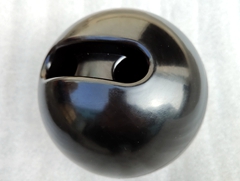Introduction of TPU hardness
Hardness is an
indicator of the ability of a material to resist deformation, nicks and
scratches. TPU hardness is usually measured by Shore A and Shore D hardness
testers. Shore A is used for softer TPU and Shore D is used for harder TPU. Due
to the nature of the block copolymer TPU determines its wide range, between
Shore A60 and Shore D80, spanning the hardness of rubber and plastics. The hardness
of TPU is related to many properties. As the hardness increases, the following
properties of TPU change. Tensile modulus and tear strength increase, rigidity
and compressive stress (load capacity) increase, elongation at break decreases,
density and dynamic heat generation increase, and environmental resistance
increases.

The relationship
between TPU hardness and temperature changes from room temperature cooling down
to sudden temperature (-4~-12℃), there is no obvious change in hardness; at sudden
temperature, TPU hardness suddenly increases and becomes very hard and loses
elasticity. This is As a result of the crystallization of the soft segment. The
hardness of TPU does not change much at 6~93℃, especially PPDI-TPU, indicating that there is no
obvious change in the morphology in this temperature range; the hardness of all
TPU formulations is basically the same at -18℃, which is due to soft segment crystallization; The
hardness of TPU decreases sharply at 149℃, especially for MDI-TPU. This is due to the destruction
of the ordered structure of the hard segment; the hardness of PPDI-TPU does not
change from a wide span temperature of -18~149℃. Large, indicating that it has good heat resistance and
low temperature resistance










